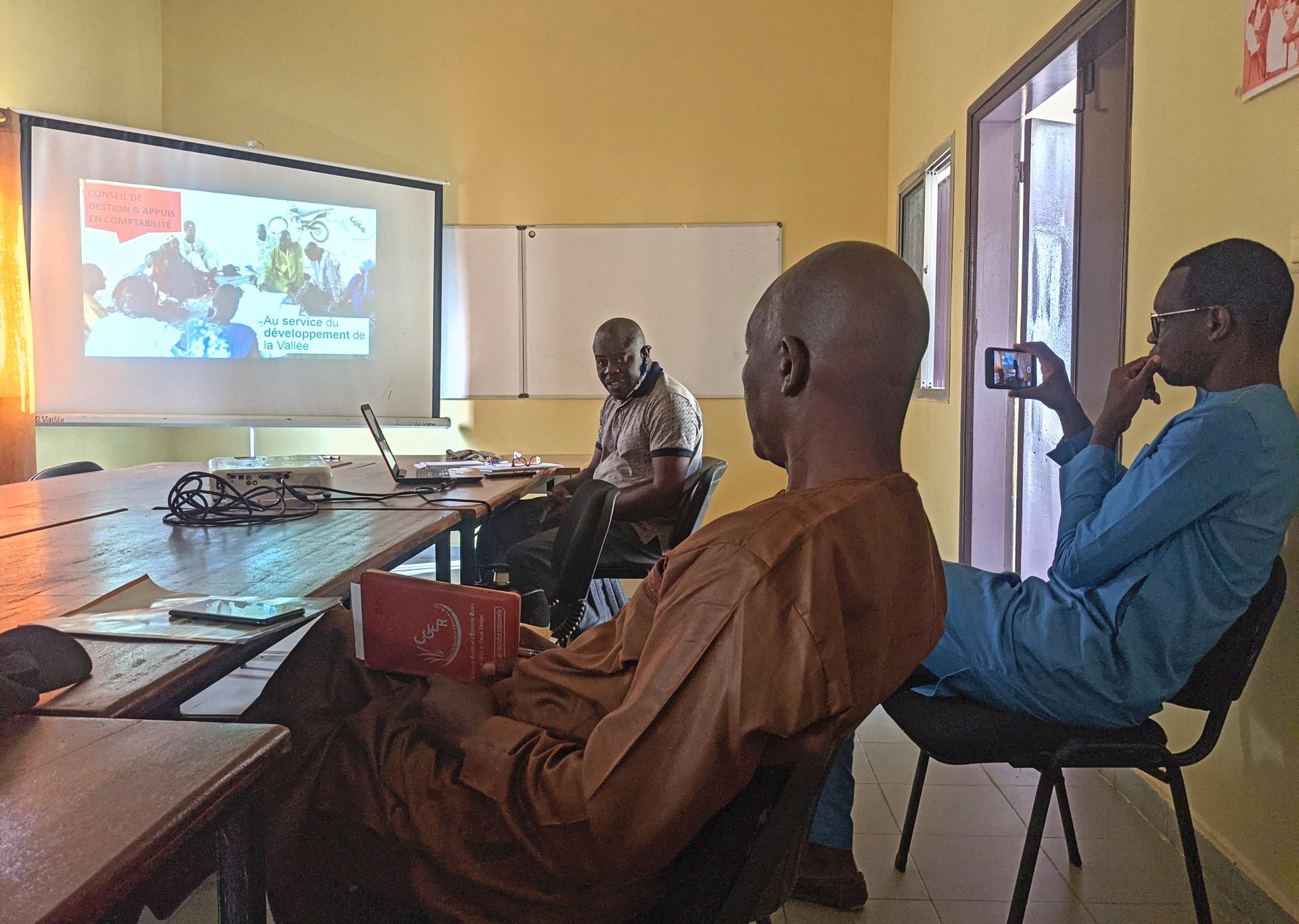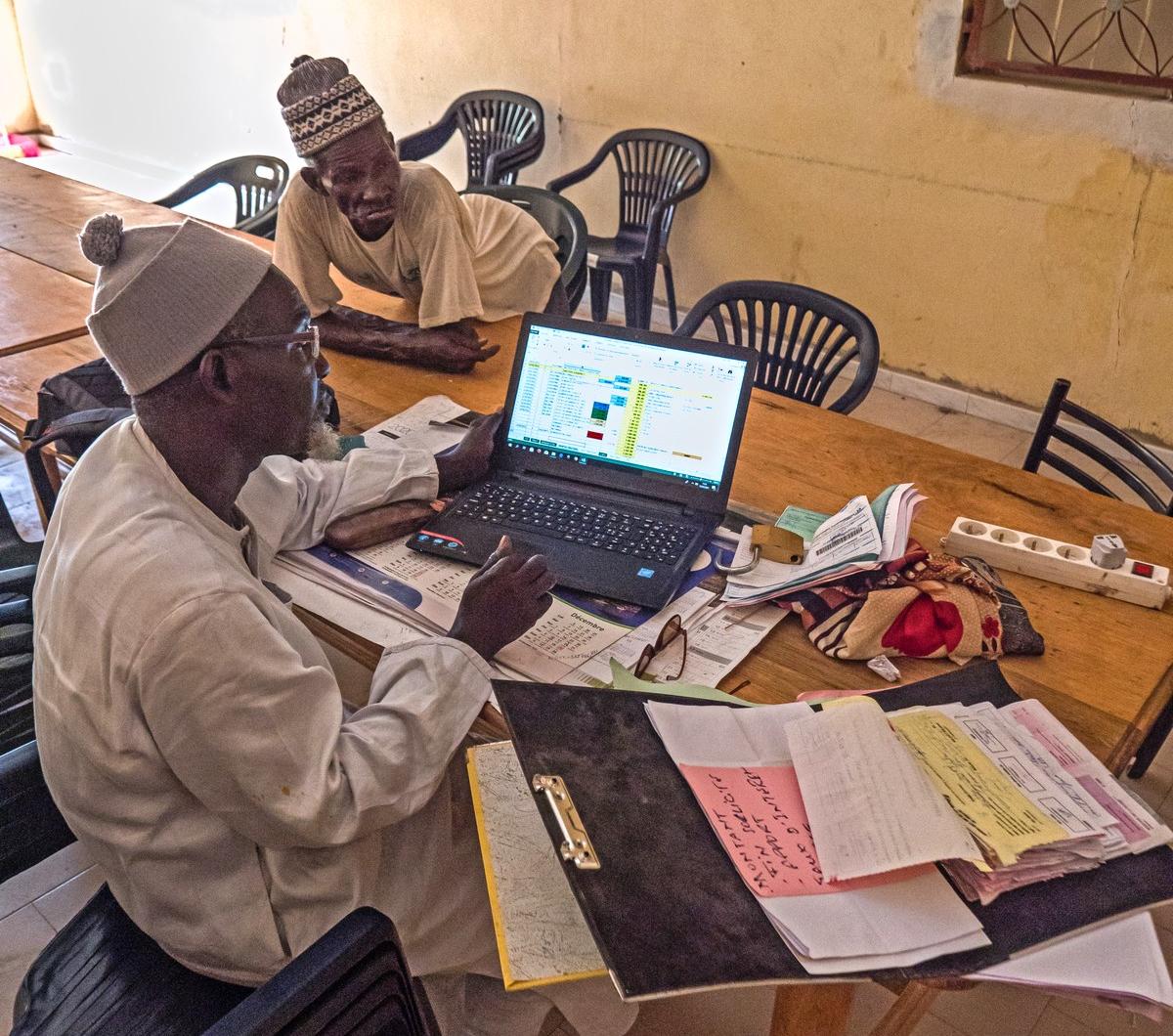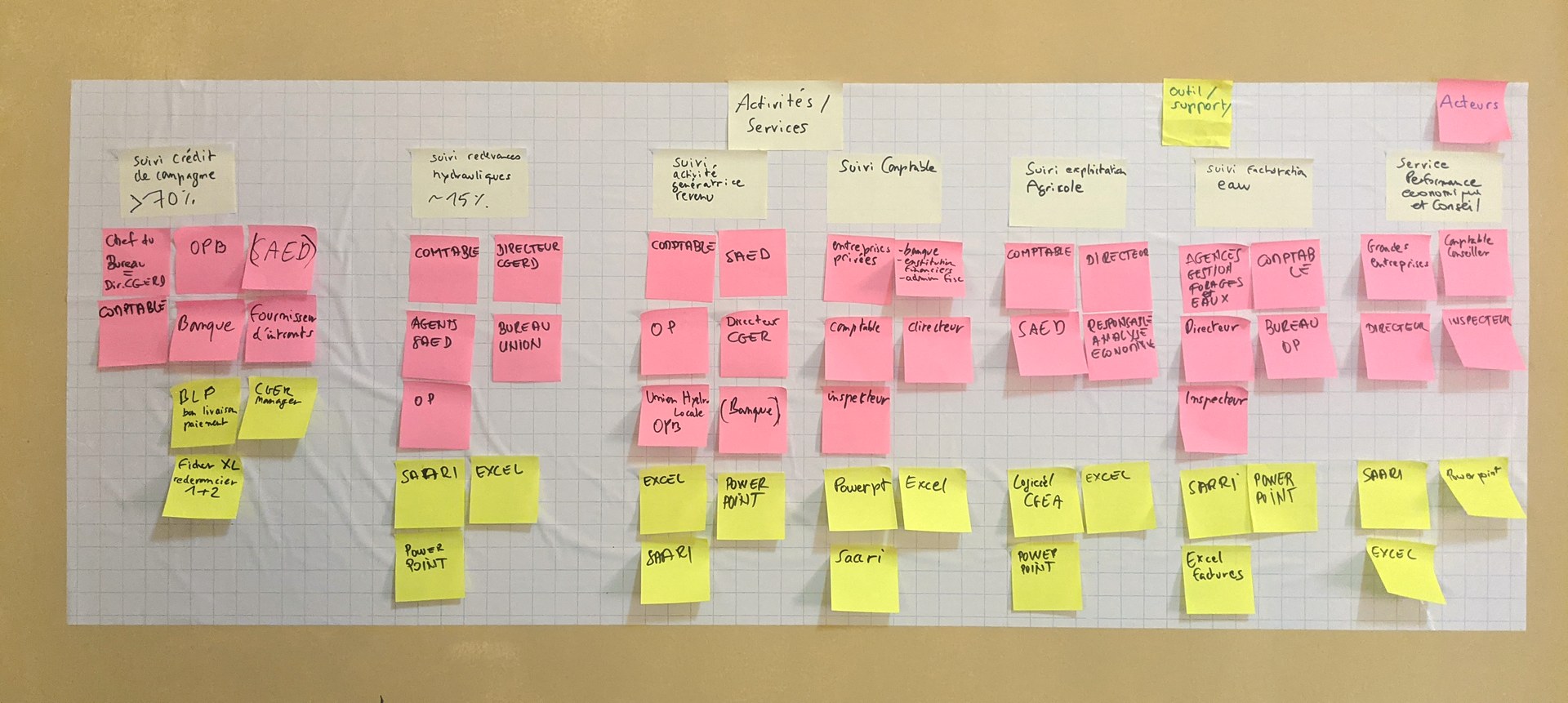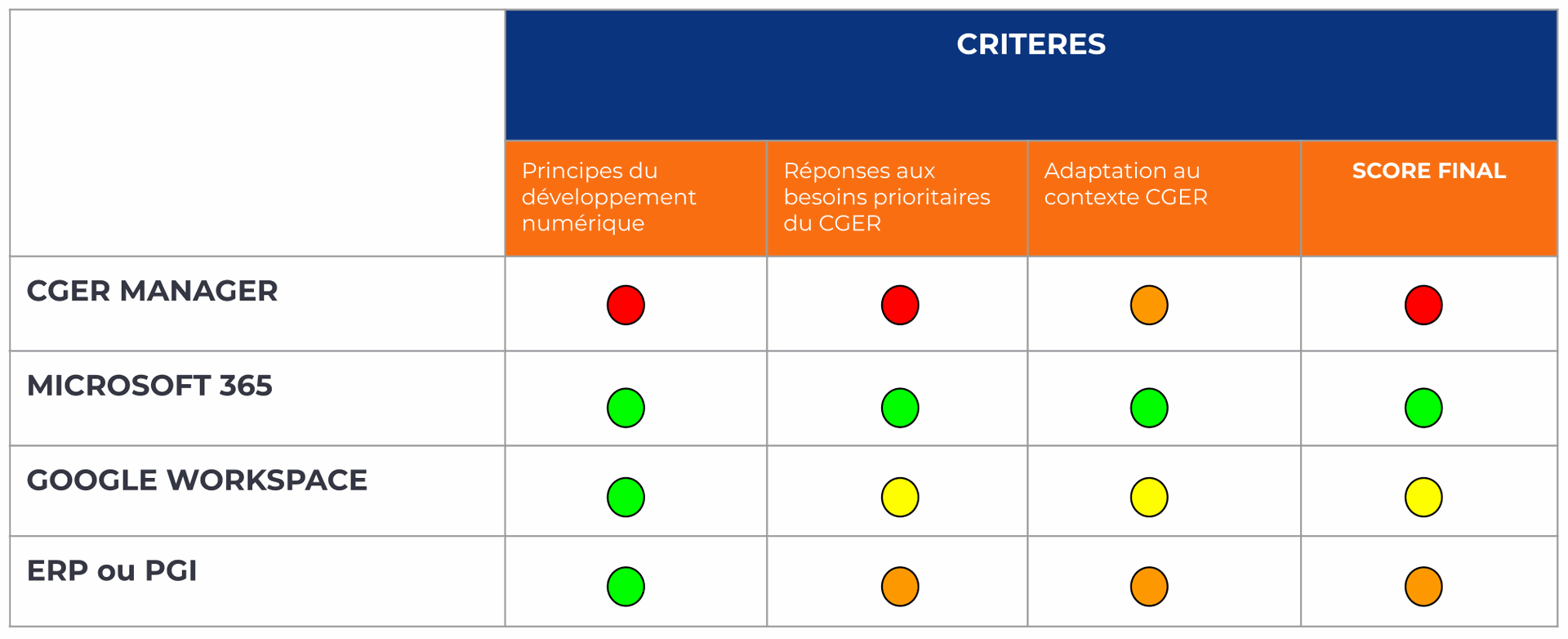In mid-2021, we were contacted by the Special Initiative on Training and Job Creation (Invest for Jobs) of the German Federal Ministry for Economic Cooperation and Development (BMZ) to carry out a digital transformation diagnosis and strategy for a non-profit organisation based in the Senegal River Valley. Unknown to many, CGER is an organisation that plays an important role in the agricultural sector, helping its clients, such as farmers' cooperatives (GIEs) with their accounting, which represent about 12,000 farmers.
Financial planning is an important part of farming in northern Senegal, as each season farmers have to pre-finance expenses such as fertiliser, seeds, water pumping costs, machinery rental. Financial transparency is essential for cooperative members to have full confidence in each other.
GIZ felt that there was an opportunity to add a digital transformation pillar to a technical assistance project with the key objective of strengthening CGER's capacity and diversifying its service offering. For us, this project was a welcome insight into the agricultural sector and an opportunity to reach the target population of farmers through digital means.
Understanding the organisation and the existing situation
Our first objective was to gain a good understanding of the CGER as an organisation. After an initial meeting with the management, we decided to visit the CGER for a week and participate in a series of meetings and workshops. The main questions we faced were the following:
What are the strengths and weaknesses of the CGER? What is the current organisational strategy?
What are previous or current experiences with digital technologies - what has worked, what has not and why?

This may sound very general and broad, but for us it is essential to align any recommendations with the strategy and culture of the organisation. We needed to get a sense of the motivations and skills of the workforce, not just through the eyes of the organisation's leaders. So we engaged in an open dialogue, with many different employees.
We brought our methodology and approach, inspired by the principles of digital development - including design with the user, reuse and improvement, design for sustainability - as well as other toolkits such as design thinking and human-centred design (SWOT, user personas, customer journey...).
Meet the worker bees, customers and partners
In order to ensure that our analysis took into account different perspectives and to make sure that we took into account the constraints of the context, we immersed ourselves in the work of the organisation. For two days we followed the work of a consultant accountant, attended a farmers' cooperative meeting and talked to farmers in the field.
We also spoke to several team members from two different sites, both as a group and separately, to avoid any hierarchy or power structure bias - not everyone is comfortable sharing when their boss is in the room.
As a by-product, we made a catalogue of the different services, processes and activities that staff work on, so that we could identify bottlenecks and start prioritising. For example, we identified processes that staff spend a lot of time on and that generate income for the organisation.
Focus on digital and the need to avoid jumping to conclusions
Several times during the week we had to make sure that we did not rush into (digital) solutions too early. We had to find a balance by trying to cover the different pillars of digital technology (infrastructure and equipment, skills and training, digital services and solutions, security and data protection, ...).
Over time, we began to understand why previous attempts at digital technology had not realised their potential, which was mainly due to some of the factors below:
Not involving users in the design processes - this has resulted in a solution that is more difficult to use and takes more time for users.
Introducing too many changes in the way people work with new tools
Not having a holistic approach that takes into account the context (a very physically distributed workforce) and the strengths of the organisation (every accountant is an Excel expert).
It is as important to discover successes as it is to identify past failures, as these may also indicate pitfalls to be avoided.
Validation of preliminary results
As we were nearing the end of our immersion week, it was important to take a break, compile what we had learned so far and validate it with our client. We organised a presentation where we outlined our findings and asked for feedback.
We were also able to prioritise the needs by asking different members to vote on the needs we had identified.

Some key needs became clear:
The CGER's client data needed to be centralised in a secure system to avoid the loss of client files
accountants need to work together on certain documents and spreadsheets
internal collaboration and communication needed to be improved
One thing we are particularly proud of is that the CGER team appreciated that we brought different people and spent a lot of time listening to their stories and needs.
From diagnosis to strategy
Of course, recognising the needs and problems is only one piece of the puzzle, so the next step was to develop a strategy. By covering the different elements of the diagnosis, we developed recommendations. In some areas, the recommendations were very simple.
For example, on the topic of digital solutions, we have developed a few scenarios:
revive and improve an existing system that had been developed by a digital services company
the deployment of a solution based on a standard online collaboration solution (Microsoft 365 or Google Workspace)
customisation of a fully-fledged ERP system (Odoo or similar)
Having analysed the existing system and found it to have major difficulties (outdated technology, faulty user journey and serious acceptance problems), we quickly ruled out option 1. In view of the strengths (experts in Microsoft Excel) and weaknesses of the organisation (low to medium digital skills), we also ruled out option 3 for the foreseeable future. The decisions are summarised in the table below (green = very good, yellow = good, orange = average, red = bad)

Finally, our deliverables consisted of compiled slides that took into account the different dimensions of digital transformation and a report that were again presented and discussed with the CGER team.
Next steps
We hope you have enjoyed these insights into the project and our way of working. Thank you to the CGER and GIZ for trusting us with this project.
In the next article in this series, we will discuss the transition from strategy to implementation and capacity building.